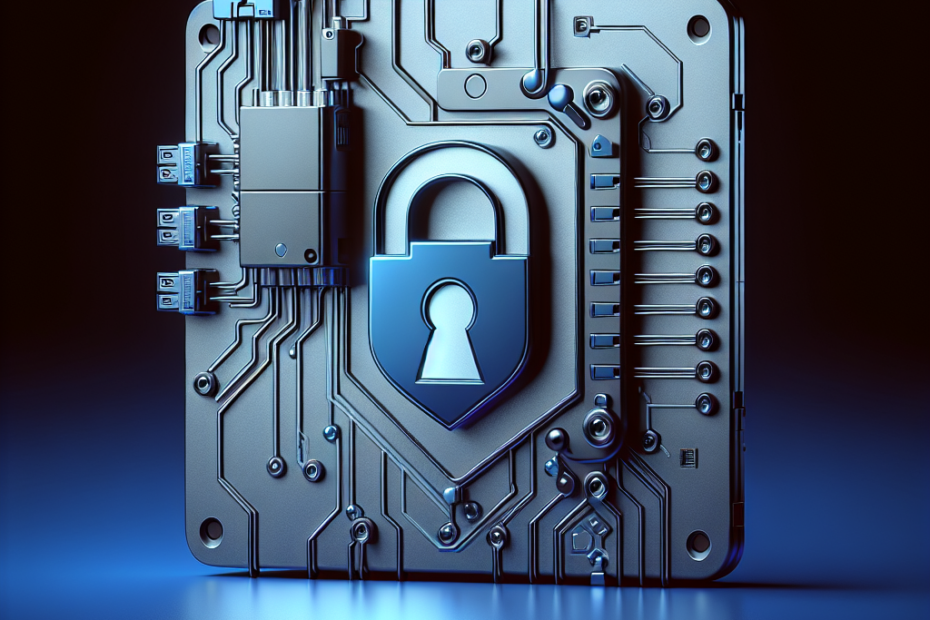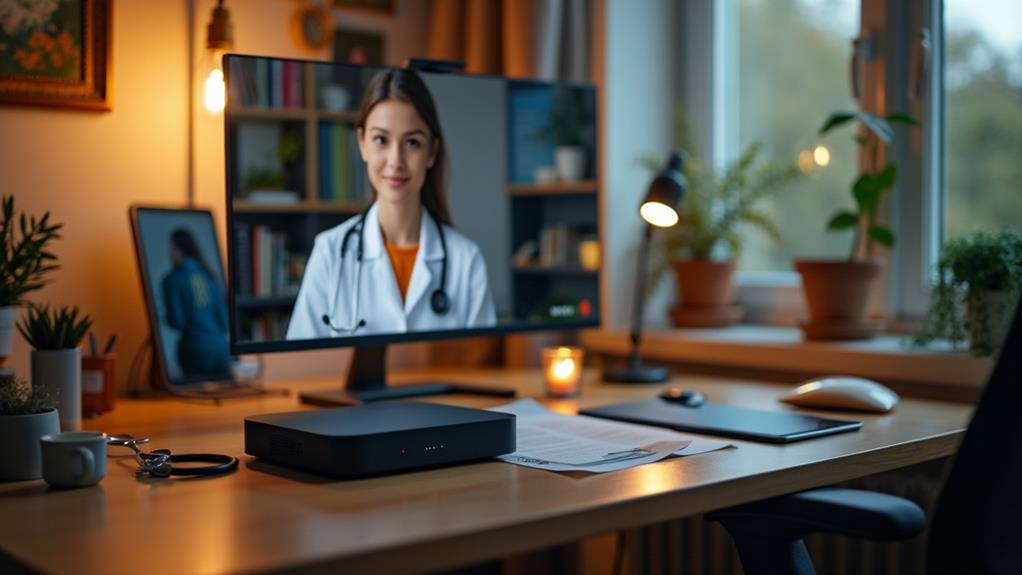



In today’s technology-driven world, mini PCs have been gaining popularity due to their compact size and convenience. However, with this increasing trend comes the question: Are mini PCs secure? This article seeks to explore the potential security risks associated with these mini devices and shed light on the measures you can take to ensure optimal security for your personal information and sensitive data. So, grab a cup of coffee and let’s dig into the world of mini PCs and their security concerns.
What are Mini PCs?
Mini PCs, also known as small form factor computers, are compact and portable computing devices that provide the functionality of a traditional desktop or laptop computer in a smaller form factor. These mini PCs are designed to be easily carried and offer a space-saving solution for those who need computing power on the go or have limited desk space.
Definition
Mini PCs are small computing devices that typically include a processor, memory, storage devices, and various ports for connecting peripherals. They are usually powered by an operating system (OS) such as Windows or Linux and offer similar functionality to a full-sized desktop or laptop computer.
Features
Despite their small size, mini PCs offer a range of features that make them attractive to users. These features may include powerful processors, sufficient memory for multitasking, storage options such as solid-state drives (SSDs) or hard disk drives (HDDs), and a variety of ports for connecting external devices. Some mini PCs even support high-definition graphics and provide multiple display outputs.
Common Uses
Mini PCs have a wide range of uses across different industries and for various purposes. Some common uses include:
- Home Entertainment: Mini PCs can be connected to a TV or monitor to stream movies, play games, or use multimedia applications, providing a compact and versatile entertainment center.
- Digital Signage: Mini PCs are often used to power digital signage displays in retail stores, restaurants, or public areas, displaying advertisements or information in a compact and efficient manner.
- Office Productivity: Mini PCs can serve as a space-saving solution for office workstations, supporting productivity applications, video conferencing, and other office tasks.
- Education: Mini PCs are popular in educational settings due to their small size and affordability. They can support interactive learning experiences, multimedia content, and collaboration among students.
- IoT Applications: Mini PCs are commonly used in Internet of Things (IoT) applications, powering devices such as smart home hubs, media servers, or security systems.
Security Concerns with Mini PCs
While mini PCs offer numerous advantages, they also come with certain security concerns that users should be aware of. These concerns primarily revolve around limited physical security, vulnerability to theft, and potential for unauthorized access.
Limited Physical Security
One of the main security concerns with mini PCs is their limited physical security. Due to their small size and portability, these devices are more vulnerable to physical tampering or theft compared to traditional desktop computers. They can be easily concealed or stolen, potentially leading to unauthorized access to sensitive data.
Vulnerability to Theft
Mini PCs are attractive targets for theft due to their small size and high value. They can be easily misplaced, lost, or stolen, leading to potential data breaches or loss of valuable information. It is crucial to implement adequate security measures to protect these devices from being stolen or falling into the wrong hands.
Potential for Unauthorized Access
Mini PCs, like any other computing device, are at risk of unauthorized access. If not properly secured, they can be targeted by hackers or individuals seeking to exploit vulnerabilities in the system. This can result in unauthorized access to sensitive data, privacy breaches, or the installation of malicious software.
Operating System Security
Ensuring the security of the operating system (OS) running on a mini PC is crucial for protecting against various threats. Here are some key considerations for operating system security:
Choice of OS
Selecting a secure and reliable operating system for your mini PC is the first step towards mitigating security risks. Choose an OS that is regularly updated with security patches, has a strong reputation for security, and offers robust built-in security features.
Updates and Patches
Regularly updating the operating system with the latest security patches is vital for maintaining a secure mini PC. These updates often address vulnerabilities discovered in the OS, reducing the risk of exploitation by cybercriminals. Enable automatic updates or regularly check for updates manually to ensure your system is up to date.
Firewall and Antivirus Software
Using a reputable firewall and antivirus software on your mini PC can help protect it from malicious attacks. A firewall acts as a barrier between your device and the internet, preventing unauthorized access, while antivirus software scans files and programs for potential threats. Install and regularly update these security tools to enhance your mini PC’s overall security posture.
Hardware Security
In addition to securing the operating system, it is essential to consider the hardware security of your mini PC. Hardware security focuses on protecting the physical components of the device from tampering, theft, or unauthorized access.
Processor and Memory
The processor and memory of a mini PC can contain sensitive data that needs to be protected. Utilize security features provided by the processor, such as hardware-based encryption, secure boot, or virtualization technologies. Additionally, ensure that memory modules are securely installed to prevent tampering or unauthorized access.
Storage Devices
Protecting the storage devices in a mini PC is crucial, as they often hold sensitive data. Consider encrypting the storage devices to prevent unauthorized access in case of theft or loss. Additionally, use reliable and reputable storage devices to minimize the risk of data corruption or device failure.
Physical Ports and Connections
Physically securing the ports and connections of your mini PC is important to prevent unauthorized access or data leakage. Ensure that all ports are properly protected and inspect them regularly for any signs of tampering. Additionally, disable or restrict unused ports to reduce potential attack vectors.
Biometric Security
Biometric security measures can add an additional layer of protection to mini PCs, making it more difficult for unauthorized individuals to access sensitive information. Here are some common biometric authentication methods used in mini PCs:
Fingerprint Scanners
Fingerprint scanners can be used to verify the identity of the user by scanning their unique fingerprint patterns. This method offers a convenient and secure way to authenticate users and prevent unauthorized access to the mini PC.
Facial Recognition
Facial recognition technology analyzes facial features to verify the identity of the user. It captures and compares facial characteristics, such as the shape of the face, the position of the eyes, or unique facial patterns. Facial recognition can provide a secure and convenient authentication method for mini PCs.
Other Biometric Authentication Methods
In addition to fingerprint scanners and facial recognition, other biometric authentication methods, such as iris scanning, voice recognition, or even heartbeat recognition, can be used to enhance the security of mini PCs. These methods leverage unique biological characteristics to ensure secure access to the device.
Networking and Internet Security
To ensure the overall security of mini PCs, it is essential to address networking and internet security concerns. Here are some key aspects to consider:
Wi-Fi and Ethernet
When connecting mini PCs to Wi-Fi or Ethernet networks, ensure that the networks are secure and properly configured. Use strong encryption protocols, such as WPA2 for Wi-Fi, and implement secure authentication methods, such as complex passwords or certificate-based authentication.
VPN and Secure Remote Access
Using a virtual private network (VPN) can add an additional layer of security when connecting to remote networks or accessing sensitive information. A VPN encrypts the data transmitted between the mini PC and the remote network, ensuring confidentiality and protection against potential attackers.
Network Monitoring and Intrusion Detection
Implementing network monitoring and intrusion detection systems can help detect and prevent unauthorized access or malicious activities on the network. These systems can monitor network traffic, analyze patterns, and alert users or administrators of potential security threats.
Data Security
Data security is crucial for protecting sensitive information stored on mini PCs. Here are some important considerations for data security:
Encryption
Encrypting sensitive data stored on mini PCs can prevent unauthorized access, even if the device is stolen or compromised. Utilize encryption technologies, such as full disk encryption or file-level encryption, to ensure that data remains secure and confidential.
Data Backup and Recovery
Regularly backing up data stored on mini PCs is vital to prevent data loss in case of hardware failure, theft, or other unforeseen events. Implement a reliable data backup strategy that includes off-site backups or cloud storage options to ensure data recovery in the event of a disaster.
Secure Erasure
When disposing of a mini PC or transferring ownership, ensure that all sensitive data is securely erased from the device. Use secure data wiping tools or software that can permanently remove all traces of data, preventing potential data breaches.
Secure Boot and Firmware
Securing the boot process and firmware of mini PCs can prevent unauthorized access or the installation of malicious software. Consider the following aspects for enhanced security:
Trusted Platform Module (TPM)
Trusted Platform Module is a hardware-based security feature that provides secure storage of cryptographic keys, secure boot capabilities, and secure authentication. Utilizing TPM can enhance the overall security of the mini PC and protect against unauthorized access.
Unified Extensible Firmware Interface (UEFI)
UEFI is a modern firmware interface that replaces the traditional BIOS. UEFI provides improved security features, including secure boot, secure updates, and firmware integrity checks. Ensure that the mini PC utilizes UEFI for enhanced firmware security.
Securing the Boot Process
Enabling secure boot and verifying the integrity of the boot process can protect against unauthorized modifications to the boot sequence and prevent the loading of malicious software. Configure the mini PC to only allow trusted and signed operating systems or bootloaders to ensure a secure boot process.
Physical Security
Ensuring the physical security of mini PCs is crucial for preventing theft, tampering, or unauthorized access. Here are some physical security measures to consider:
Locking Mechanisms
Use locking mechanisms, such as cable locks or lockable enclosures, to secure mini PCs to desks, shelves, or other fixed structures. These mechanisms can act as a deterrent against theft and provide an extra layer of protection.
Security Cables
Security cables are flexible and sturdy cables that can be attached to mini PCs and anchored to a fixed object. Consider using security cables to prevent theft or unauthorized removal of mini PCs from the premises.
Surveillance and Alarms
Implementing surveillance cameras and alarms in areas where mini PCs are located can deter theft and unauthorized access. These security measures can help identify potential perpetrators and alert personnel of any suspicious activities.
Best Practices for Mini PC Security
To ensure the highest level of security for your mini PC, follow these best practices:
Strong Passwords
Use strong and unique passwords for all user accounts on the mini PC. A strong password should be complex, combining uppercase and lowercase letters, numbers, and special characters. Avoid using easily guessable or commonly used passwords.
Regularly Update Software
Regularly update the operating system, applications, and security software on your mini PC to ensure that all security patches and updates are applied. Keeping the software up to date helps protect against known vulnerabilities and reduces the risk of exploitation.
Disable Unused Features
Disable any unused features, services, or ports on your mini PC to minimize potential attack vectors. Unnecessary features and services can introduce additional risks and make the device more susceptible to exploitation.
By following these comprehensive security measures and best practices, you can enhance the security of your mini PC and protect your sensitive data from unauthorized access, theft, or malicious activities. Remember that security is an ongoing process, and staying vigilant and proactive is essential in today’s ever-evolving digital landscape.
Disclosure: As an Amazon Associate, I earn from qualifying purchases.







